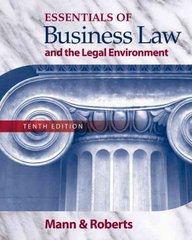Question
Question 1 was :Two countries, A and B, have a conflict over a common border. The border can take values from zero to one, inclusive,
Question 1 was :"Two countries, A and B, have a conflict over a common border. The border can take values from zero to one, inclusive, where x is the percentage of the disputed territory under Country A's control. The status quo border is normalized to one, which is Country A's ideal point. Country B's ideal point for the border is 0. Country A's utility function is r and Country B's utility function is 1-x and, where r is the point at which the border is actually set. If the two countries go to war over the border dispute, the winner will set the border at its ideal point. Assume that the costs of war are 0.15 for each country. Suppose country A has a probability of winning the war of 0.50."

Step by Step Solution
There are 3 Steps involved in it
Step: 1

Get Instant Access to Expert-Tailored Solutions
See step-by-step solutions with expert insights and AI powered tools for academic success
Step: 2

Step: 3

Ace Your Homework with AI
Get the answers you need in no time with our AI-driven, step-by-step assistance
Get Started


